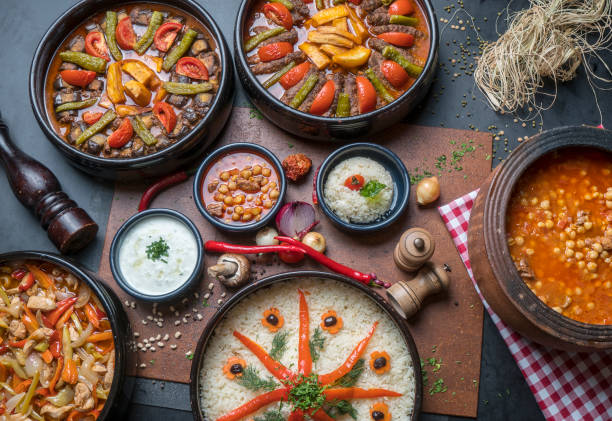Turkish cuisine is a reflection of the country’s rich history and cultural diversity, merging influences from Central Asia, the Middle East, the Mediterranean, and the Balkans. As a result, Turkish cuisine offers a remarkable variety of flavors, textures, and cooking techniques, making it one of the world’s most beloved culinary traditions.
The Foundation of Turkish Cuisine
At the heart of Turkish cuisine is the emphasis on fresh, local ingredients. Each region of Turkey brings its own unique ingredients and culinary practices to the table, creating a rich and diverse food culture. In the coastal regions, for example, seafood plays a central role, while in the interior, lamb and beef dominate the dishes. The Mediterranean climate of Turkey also ensures an abundance of fruits, vegetables, and herbs, which are commonly used in everyday meals.
Staple ingredients like olive oil, yogurt, eggplant, and fresh herbs like parsley and mint form the backbone of many traditional Turkish dishes. Spices such as cumin, sumac, and paprika are used to enhance flavors without overpowering the natural taste of the ingredients. This balance is key to the distinct flavor profile of Turkish cuisine, which tends to be mild yet incredibly flavorful.
Signature Dishes of Turkish Cuisine
1. Kebabs:
One of the most iconic elements of Turkish cuisine is the kebab. Grilled meats, especially lamb, are prepared in a variety of styles across the country. The famous Adana kebab is spicy and bold, while the Şiş kebab is a milder version, typically made with cubes of marinated meat skewered and grilled over an open flame. Kebabs are often served with grilled vegetables, rice, and flatbread, making them a complete and satisfying meal.
2. Mezes:
A traditional Turkish meal often begins with a selection of mezes—small, shareable appetizers that include a range of cold and hot dishes. Common mezes include hummus, baba ghanoush (a smoky eggplant dip), sarma (vine leaves stuffed with rice and spices), and acılı ezme (a spicy tomato and pepper salad). These appetizers provide a flavorful introduction to the main course and encourage communal dining, which is an important part of Turkish food culture.
3. Turkish Pide and Lahmacun:
Often referred to as Turkish pizza, pide is a boat-shaped flatbread stuffed with ingredients such as cheese, minced meat, spinach, or eggs. Lahmacun, on the other hand, is a thin, round flatbread topped with a mixture of ground lamb, vegetables, and spices. Both are typically served with fresh lemon and parsley, offering a simple yet delicious experience.
4. Baklava:
For those with a sweet tooth, baklava is perhaps the most famous dessert to emerge from Turkish cuisine. Made with layers of delicate phyllo dough, chopped nuts, and sweet syrup or honey, baklava is an indulgent dessert that is enjoyed across the country. Regional variations may include the use of pistachios, walnuts, or almonds, adding to its richness.
The Importance of Turkish Breakfast
Breakfast in Turkey is more than just a meal—it’s a social experience that brings family and friends together. A traditional Turkish breakfast, known as kahvaltı, consists of a wide array of dishes, including olives, cheeses, tomatoes, cucumbers, eggs, honey, jams, and various types of bread. Accompanied by Turkish tea, kahvaltı is often leisurely enjoyed, reflecting the importance of community and hospitality in Turkish culture.
Why Turkish Cuisine Is Beloved Worldwide
The appeal of Turkish cuisine lies in its balance of flavors, its reliance on fresh, simple ingredients, and its emphasis on sharing and community. Turkish meals are often served family-style, encouraging people to share
dishes and enjoy food together. The variety of Turkish cuisine means there is something for everyone, from hearty meat dishes to lighter vegetarian options and a wide range of sweets.

